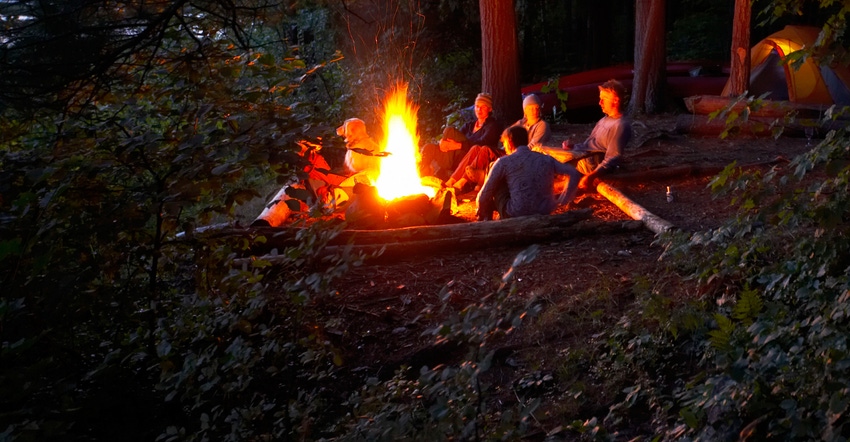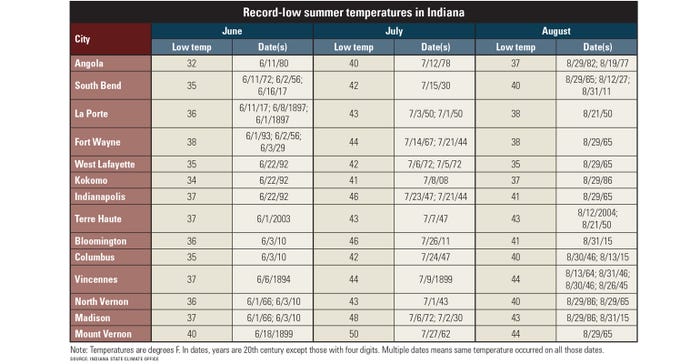May 3, 2017

An old farmer’s tale claimed that during one year decades ago, it frosted somewhere in Indiana every month of the year. Is that fact or fiction?
Based on data from official weather stations, it may be fiction. However, there have been cold summers where nighttime lows dipped below 40 degrees F during summer months at various parts of the state. Since temperatures can vary among reporting stations, it might be premature to call it "fiction."
As many Midwesterners know, this region is prone to strange weather at all times of year. This month we will look at cold weather in the summertime, because it has happened.
In June, record-low temperatures statewide are in the upper 30s, with some spots at or near freezing.

Volcano factor
As far as June is concerned, only Angola among these cities has hit or come close to freezing in June. One common year among these lows was 1992. This is just one year after the eruption of Mount Pinatubo in the Philippines, which caused Northern Hemisphere temperatures to be nearly 1 degree F below normal from summer 1991 to 1993.
Yes, there were reports of corn turned brown by frost if the growing point was still belowground, or actually killed if it was aboveground. Cornfields from Brownsburg to Peru were affected, but not every field. A phenomenon called a temperature inversion was blamed for these local effects.
July and August
It seems temperature in Indiana hasn’t quite made it into the 30s in July, but has come close in some areas — and probably has at some point away from an observation station. There’s no real common date for these record lows except the three occurrences of late July 1947 and two records set on July 2, 1972. The National Oceanic and Atmospheric Administration attributes this cold July in 1972 to abnormally strong northerly flow from Alaska into the continental United States. Much of the central U.S. was anywhere from 3 to 6 degrees F below normal for the month.
The cold streak of late August 1965 sticks out quite clearly. According to the weather bureau, record cold temperatures were set nationwide that week as far south as Augusta, Ga., due to an occluding wave over maritime Canada that brought successive bursts of continental Canadian air into the U.S.
So rare reports of temperatures falling into the 30s and 40s during the summer months aren’t unfathomable. All it takes is the right setup or atmospheric shift, and Christmas in July could be much more realistic than anticipated.
Eggert works in the Indiana State Climate Office. He writes from West Lafayette. Tom J. Bechman contributed to this story.
About the Author(s)
You May Also Like




